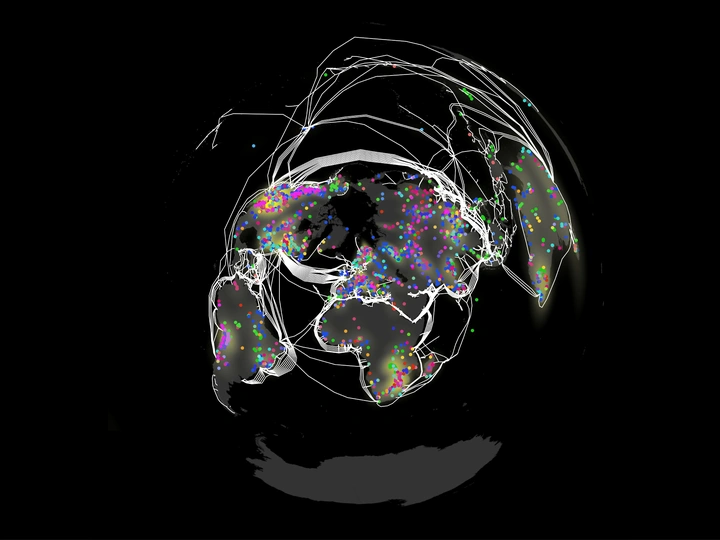From Million Years to Millseconds

Theodor Reinhardt is a transdisciplinary researcher and designer educated between the Netherlands, Germany and Japan, holding an MSc cum laude in Architecture from the TU Delft. Interested in material and operational complexities of and between territories, infrastructures and systems, he works with spaces, objects, maps, graphics, videos, exhibitions and texts.
Ongoing work includes From Million Years to Milliseconds - a research project on technological operations, geological origins and temporal becomings of submarine data infrastructures, in collaboration with scientists, researchers and designers. Together with Negar Sanaan Bensi and Shaghayegh Vaseghi, he is conducting research On Thirst and Mirage - a study of conflictual territories and ecological precarity in the Iranian-Afghan border region.
His work is published in Miradas. Journal for the Arts and Culture of the Americas and the Iberian Peninsula (2025), DATAPOLIS. Exploring the Footprint of Data on Our Planet and Beyond (2023) and Atlantis Magazine (2022), as well as exhibited at Countryside 2 (2025), Indigenous Intelligence (2025), MAPS. New Cartographies, New Narratives (2023) and the 17th Venice Biennale of Architecture (2021) as part of Dogma. He has taught the Willem de Kooning Academy Rotterdam and Amsterdam Academy of Architecture.
From Million Years to Milliseconds (funded by Stimuleringsfonds) traces material origins of digital technologies through five key materials—fibreglass, copper, steel, polymers, and erbium—embedded in transoceanic submarine cables that currently carry 98% of globally transmitted data. Zooming in on the Atlantic Crossing 1 (AC-1) submarine cable that connect the US with the UK, the Netherlands and Germany, the project maps the cable material’s extraction, transformation, and circulation from deep time (millions of years) to near-instantaneous data transmission (milliseconds), working against notions of an ephemeral, weightless “Cloud” to reveal its entangled materialities.
This project reframes the digital as a contested geological and geopolitical terrain, exposing the environmental violence, labour struggles, and planetary-scale dependencies often obscured by techno-optimist narratives. By grounding the ephemeral in strata, it fosters critical public engagement with the Anthropocene’s infrastructural realities—from mining’s ecological scars to the geopolitical control of cable routes. Five material narratives will help policymakers and the public with to interrogate technology’s material footprint, while inviting institutions to rethink exhibitions as spaces for geologic and thus planetary literacy. In an age where climate crisis, planet system collapse, the Internet of Things and AI expansion can effortlessly co-exists, this work disrupts the inertia of digital abstraction, insisting that every byte is inextricably material and thus ultimately a part of a shared Earth.
Produced in collaboration with geologists, researchers and designers, five maps will follow the stories of the five materials as they cut through scales, geographies and disciplines. These will visualise how digital infrastructures are rooted in stratigraphic processes, colonial histories, and more-than-human agency, challenging the myth of digital immateriality and anthropocentric thinking.